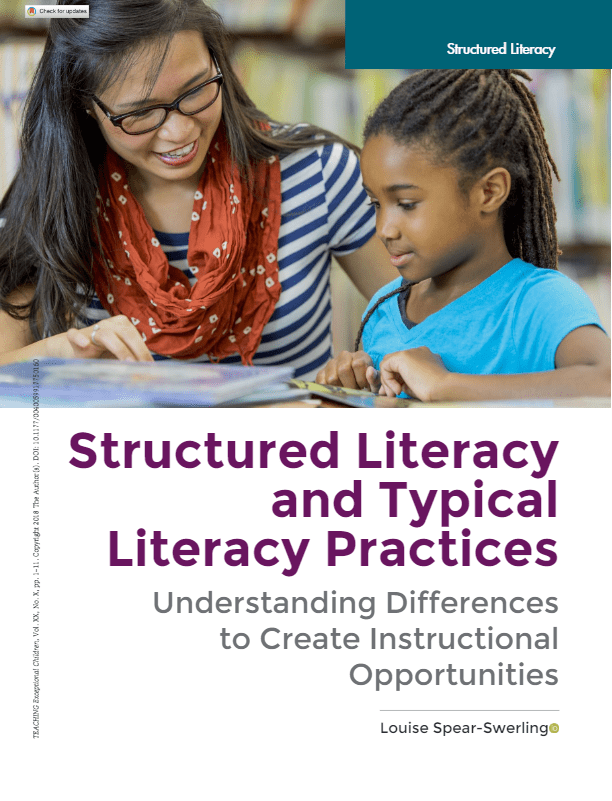In this article, Louise Spear-Swerling discusses the key features of structured literacy (SL) beginning with explicit and systematic instruction. The article explains why SL is an effective way to teach children with dyslexia and students who struggle with learning to read.
Information on what Spear-Swerling calls typical literacy practices (TLP) cites other types of teaching where the reading is more of the lesson focus than phonemic awareness or phonics. Tables in the article include sample activities with prerequisites, the differences between SL and TLP and different types of student oral reading errors in text.
